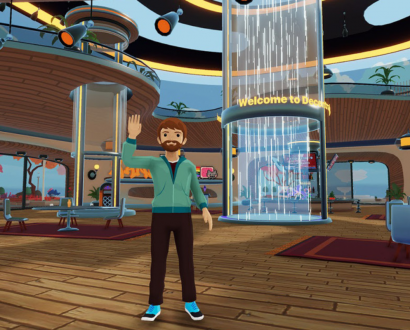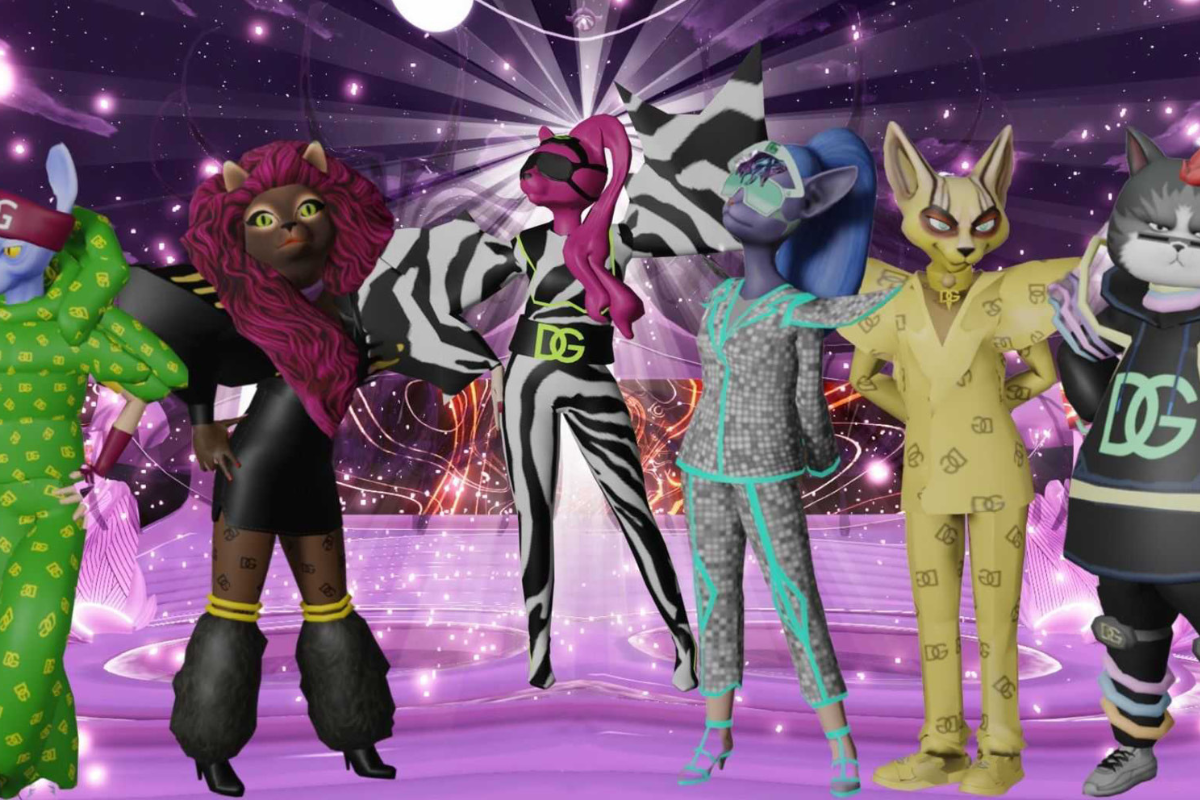How major companies are finding their niche in the digital frontier

Mark Zuckerberg’s announcement in 2021 that he would be building the metaverse sent ripples through the tech world, sparking a wave of anticipation and excitement.
The concept promised a shared digital world where users could interact in 3D, transcending the boundaries of the physical realm. Investors made bold predictions, envisioning that a billion users would spend substantial sums in this new frontier.
But just two years later, the metaverse’s grandiose promises seemed to have fizzled out. Use has remained low and it failed to provide a clear value proposition for businesses.
In March this year, Zuckerberg acknowledged a shift in focus toward AI, signaling a pivot away from the metaverse and prompting some to declare that the idea was now obsolete.
However, beneath the surface, a quiet revolution has been taking place, as businesses begin to explore the potential of other metaverse platforms in more practical and nuanced ways.
Rather than relying on extravagant promises, businesses using these technologies are crafting tailored experiences that resonate with their audiences.
Crafting unique experiences

One such platform is Decentraland, a metaverse platform launched in 2020.
"Fashion and beauty brands are increasingly deploying activations in Decentraland in order to experiment with new technology, leverage the platform’s high engagement rates and build their communities via co-creation," explains Emma Mansfield, Head of Partnerships at The Decentraland Foundation.
Giants like Dolce & Gabbana, Coach, Tommy Hilfiger and Adidas recently participated in a virtual fashion week organized by Decentraland.
These experiences not only connect brands with their audiences, but also demonstrate a commitment to innovation and technology adoption.
Each brand created a unique branded experience, incorporating elements like non-fungible token (NFT) wearables, AI-driven fashion creation, augmented reality (AR) try-ons, gamified experiences and exclusive digital drops.
For example, Coach’s gamified experience within Decentraland allows users who completed specific tasks to unlock an AR filter in an app. They can then try on Coach’s Tabby bag in the comfort of their own homes.
Adidas has utilized Decentraland’s Linked Wearables feature, enabling NFT holders to wear digital assets in the virtual world.
These experiences not only connect brands with their audiences, but also demonstrate a commitment to innovation and technology adoption.
Establishing a presence
It’s not only retail brands entering the space. Financial institutions like JP Morgan, Deutsche Bank, Fidelity and PKO (Poland) have recognized the metaverse’s potential to engage young adults in exploring investment opportunities.
"Deutsche Bank, for example, believes its target group of tomorrow is in the metaverse, and it has launched a 3D environment to better understand how to present the brand, how to connect and be relevant to this audience," Mansfield tells The CEO Magazine.
This forward-thinking approach demonstrates an understanding of the evolving landscape and a willingness to adapt to meet the needs of future clients.
"Interestingly, food and beverage brands have been quick to experiment with the metaverse, despite the obvious limitations on taste and smell." – Emma Mansfield
Some brands are also using Decentraland to optimize their real-world advertising campaigns by creating concurrent digital experiences.
"Interestingly, food and beverage brands have been quick to experiment with the metaverse, despite the obvious limitations on taste and smell," Mansfield says.
Coca-Cola, for instance, hosted metaverse parties for its annual World Friendship Day, transcending geographical boundaries and connecting with a global audience.
Earlier this year, Doritos also became the first brand to re-create its Super Bowl advertisement in the metaverse, using Decentraland.
And the vodka brand Absolut expanded the reach of its Coachella festival campaign through digital engagements, demonstrating the versatility of the metaverse for marketing campaigns.
A metaverse wedding
Perhaps one of the most remarkable examples of food and beverage brands in the metaverse is Taco Bell’s recent virtual wedding, in which a real couple got married at a Taco Bell-sponsored location within Decentraland’s platform.
Held in a replica of a Taco Bell restaurant in the Fashion Street district of Decentraland, the event featured avatars dressed in wedding attire exchanging vows in front of a Taco Bell-themed altar.
"The wedding generated significant buzz and helped raise awareness of Taco Bell’s presence in the metaverse." – Emma Mansfield
The virtual reception included bottomless Baja Blasts and endless tacos, creating an immersive experience that resonated with fans worldwide.
"The event was a way for Taco Bell to reach new audiences and connect with its fans in a new way, with thousands of people from all over the world attending," Mansfield says. "The wedding generated significant buzz and helped raise awareness of Taco Bell’s presence in the metaverse."
Beyond the metaverse
While the metaverse may have faced setbacks, NVIDIA Omniverse has emerged as a powerful tool for businesses to create immersive digital experiences. A real-time 3D design collaboration platform, it allows users to run simulations and or implement digital twinning .
Companies are leveraging Omniverse to build physically accurate virtual worlds. While these virtual worlds may not be directly accessible to customers, they improve the experiences that employees can create for customers.
United States-based home improvement retailer Lowe’s, for instance, has used the Omniverse to create digital twins for some of its stores.
These digital twins serve as simulation environments, allowing the companies to optimize their workflows, test new processes and improve efficiency in a cost-effective way.
Using an AR headset, store workers can interact with the digital twin to ensure it’s stocked correctly. They can even leave digital sticky notes throughout the Omniverse store to make suggestions to improve store planning in the real world.
BMW and Siemens have also taken advantage of Omniverse to create digital replicas of their factories. These digital twins serve as simulation environments, allowing the companies to optimize their workflows, test new processes and improve efficiency in a cost-effective way.
Industrial Light & Magic (ILM), the visual effects company founded by George Lucas, is using Omniverse to enhance its creative processes. By allowing artists to efficiently search through its vast library of digital assets, ILM is streamlining its production pipeline and staying at the forefront of visual effects technology.
Not done yet
The metaverse’s initial hype may have faded, but for businesses, it marked the beginning of a more pragmatic and nuanced exploration of this digital frontier.
Fashion and beauty brands, financial institutions, food and beverage companies and industrial giants have found innovative ways to harness the potential of various metaverses.
While the grand vision of a shared digital world remains a work in progress, these companies have demonstrated that a metaverse can be a valuable space for engagement, innovation and community building.
As the metaverse continues to evolve, it is clear that businesses willing to adapt and experiment will find their niche and thrive in this dynamic digital landscape.